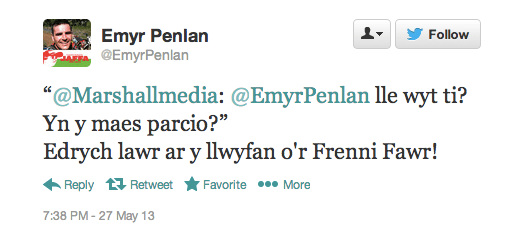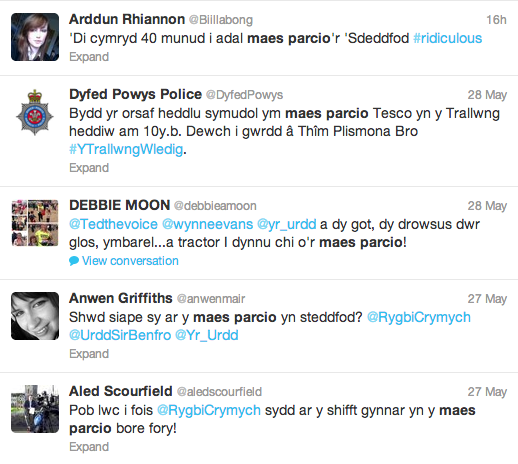Another reason Twitter is awesome: Cambridge University linguists are using it to track how the usage of one of the U.K.’s Celtic languages, Welsh, is changing. Welsh is only spoken by around a sixth of the population of Wales — or some 562,000 people — but enough of those Welsh speakers are tweeting in Welsh to have allowed the researchers to compile a database of source material to use as a jumping off point for more detailed field research.
Here’s Dr David Willis, of Cambridge’s Department of Theoretical and Applied Linguistics, explaining the role Twitter played in the research — notably its usefulness to linguists is how conversational it is. In other words, people typically tweet like they speak:
When your intention is to capture everyday usage, one of the greatest challenges is to develop questions that don’t lead the respondent towards a particular answer but give you answers that provide the material you need. If I want to find out whether a particular construction is emerging, and where the people who use it come from, I would normally have to conduct a time-consuming pilot study, but with Twitter I can get a rough and ready answer in 30 minutes as people tweet much as they speak.
My focus is on the syntax of language – the structure or grammar of sentences – and my long-term aim is to produce a syntactic atlas of Welsh dialects that will add to our understanding of current usage of the language and the multi-stranded influences on it. To do this relies on gathering spoken material from different sectors of the Welsh-speaking population to make comparisons across time and space.
Using the Twitter data Willis was able to identify aspects of the language that are changing, and then apply that data to devise questionnaires used for oral interviews during follow-on field work.
Linguistic changes identified by the research so far include differences in use of pronouns and multiple negatives, based on whether Welsh was learnt in the home or at school — with English sentence constructions filtering into the language more when Welsh is learnt at school vs at home.
The researchers note that since around a fifth of the Welsh population is educated in Welsh at school data on this aspect of language acquisition could help shape regional teaching policy — by, for example, determining which forms to teach second-language learners or in promoting both dialect and standard written Welsh in schools.
So from a few tweets about car parking (maes parcio, in case you couldn’t guess), to, potentially, a better language teaching policy — all from 140 character snippets of information. Now that is cool.

